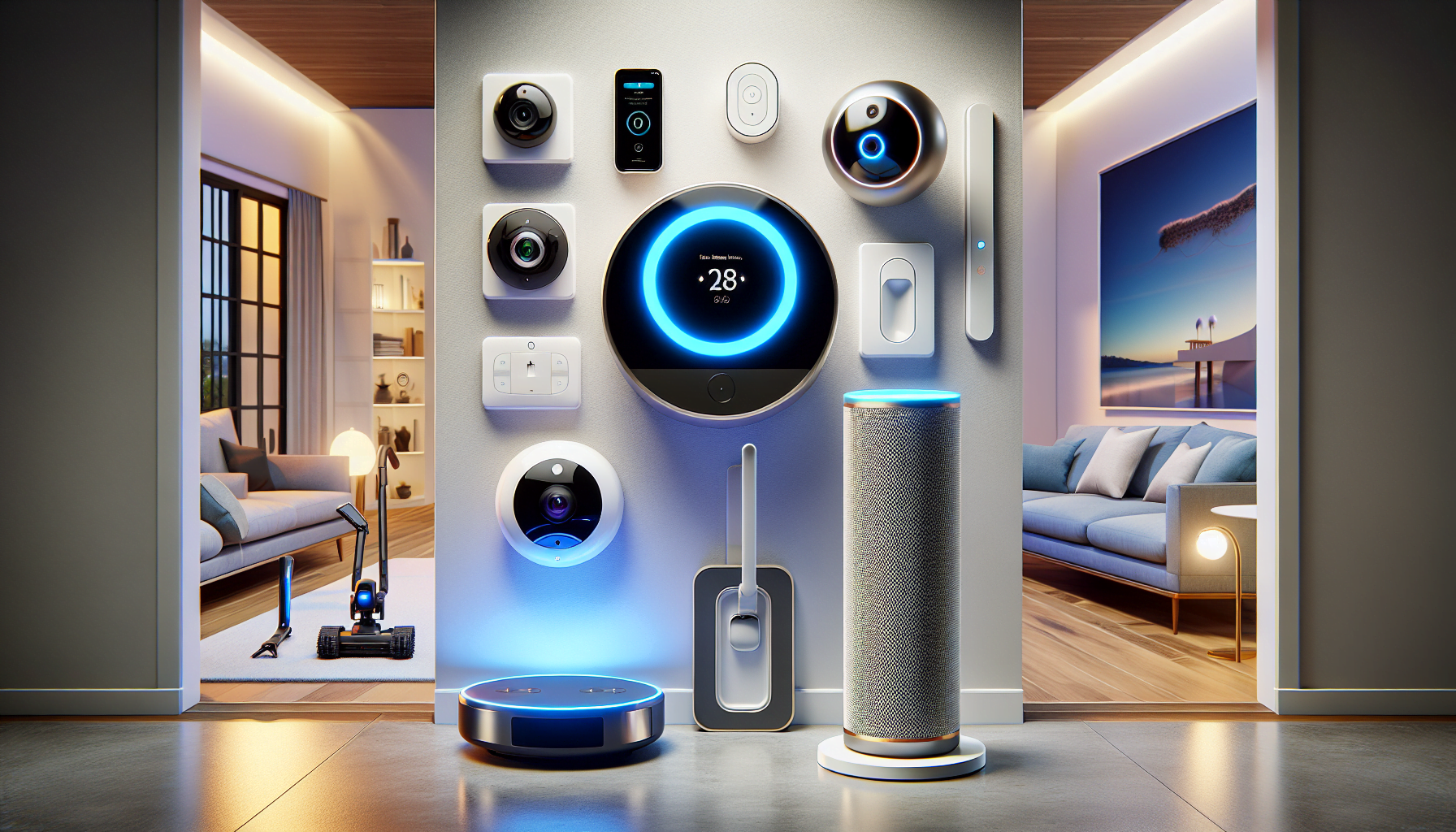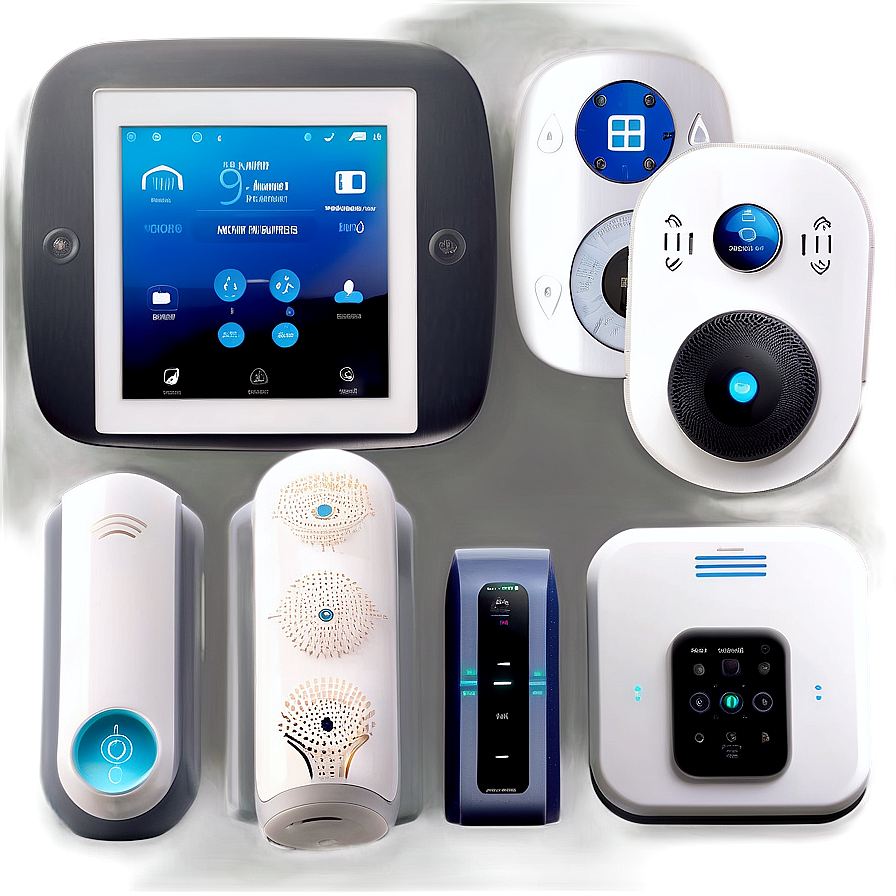
By: Expert Contributor | Updated on: 2025-08-10
Smart homes are no longer a futuristic fantasy; they’re a rapidly growing reality, fundamentally altering how we live, interact with our living spaces, and manage our daily routines. The seamless integration of smart home devices offers unparalleled convenience, significantly enhanced security, and substantial energy savings – benefits that are increasingly attractive to homeowners of all ages and technological expertise. This comprehensive guide will delve into the fascinating world of smart home technology, providing you with the knowledge and tools to understand its capabilities, navigate the often-complex selection process, and ultimately unlock its full potential within your own home. From the basic automation of lighting to advanced integrations that manage entire home systems, we’ll explore the key aspects of creating a truly intelligent and efficient living environment, tailored precisely to your needs and lifestyle.

Key Takeaways
- Smart home devices significantly improve home security and convenience, offering peace of mind and streamlining daily tasks. This translates to a more relaxed and efficient lifestyle, freeing up time and mental energy for other pursuits.
- Independent studies consistently demonstrate a significant reduction in energy bills for homes utilizing smart home devices. A recent meta-analysis of multiple studies revealed an average reduction of 20%, though savings can vary depending on factors like climate, home size, and the specific smart devices implemented. This financial benefit contributes to both long-term cost savings and environmental sustainability.
- Starting small with one or two strategically chosen devices is highly recommended. This allows you to understand the technology, familiarize yourself with the integration process, and identify any potential challenges before committing to a larger, more complex smart home system. This phased approach minimizes risk and maximizes learning.
Table of Contents
- Choosing the Right Smart Home Hub: The Foundation of Your Smart Home
- Integrating Smart Home Devices: A Step-by-Step Guide to Seamless Integration
- Frequently Asked Questions (FAQ)
- Conclusion
Choosing the Right Smart Home Hub: The Foundation of Your Smart Home
Selecting a suitable smart home hub is paramount; it’s the central nervous system of your smart home, acting as the crucial connection point and coordinating system for all your various smart devices. Think of it as the conductor of an orchestra, ensuring every instrument (device) plays in harmony. Popular and established options currently dominate the market, each with its strengths and weaknesses. These include Amazon Alexa, Google Home, Apple HomeKit, and Samsung SmartThings. Each platform boasts unique features and varying degrees of compatibility with specific brands and models of smart devices.
Before making your decision, carefully consider several key factors. Ease of use is critical, especially for those less familiar with technology. Thoroughly investigate the device compatibility of each hub; ensure it supports the devices you intend to integrate. Voice assistant integration is another important consideration, as the convenience of voice control is a major selling point for many smart home systems. Finally, consider your existing technological ecosystem – do you primarily use Apple products, Android devices, or a mix? Choosing a hub compatible with your existing technology will provide a more seamless and intuitive user experience. Understanding that your choice of hub significantly impacts the range of smart devices you can integrate is crucial. Thorough research into the different platforms and their respective capabilities will empower you to select a hub that aligns perfectly with your specific needs, budget, and long-term vision for your smart home.
“The future of home is connected, automated, and personalized. Smart home hubs are the key to unlocking this future, providing a centralized control system and unlocking the full potential of smart devices.”
Integrating Smart Home Devices: A Step-by-Step Guide to Seamless Integration
Integrating smart home devices is generally a straightforward process, significantly easier than many homeowners initially anticipate. Most reputable manufacturers provide user-friendly mobile applications that guide you through the setup process step-by-step. This typically involves connecting the device to your home’s Wi-Fi network and then linking it to your chosen smart home hub. Once this initial connection is established, you can then begin to customize settings and explore the wide range of functionalities offered by each device. This allows for personalization to meet your specific preferences and needs.
It’s highly recommended to start with basic devices, such as smart lighting or a smart thermostat. This incremental approach allows you to grasp the fundamental principles of smart home integration, gaining confidence and practical experience before venturing into more complex systems. Smart lighting, for instance, allows you to control lighting schedules, adjust brightness remotely, and even automate lighting based on your routines or preferences. A smart thermostat, on the other hand, offers the potential for significant energy savings by intelligently managing your home’s temperature based on occupancy and energy usage patterns. Remember to always check the compatibility of different brands and devices; ensuring seamless integration will avoid frustrating compatibility issues down the line. Prioritize devices from established and reputable manufacturers with a proven track record of reliability and customer support.
💡 Pro Tip: Begin with one room or a specific area of your home. This focused approach simplifies the integration process, allowing you to learn the technology at your own pace and comfortably troubleshoot any minor issues before expanding to other areas of your home. This phased rollout minimizes stress and maximizes your learning curve.

Frequently Asked Questions (FAQ)
What are the most common smart home devices?
The array of available smart home devices continues to expand rapidly, encompassing a vast range of technologies. Some of the most common and popular devices include:
- Smart Lighting: This includes smart light bulbs, switches, and even entire lighting systems that allow for remote control, scheduling, and automated adjustments based on your preferences or routines.
- Smart Thermostats: These programmable thermostats learn your preferences and automatically adjust your home’s temperature to optimize energy efficiency and comfort.
- Smart Speakers: Devices like Amazon Echo and Google Nest serve as central control hubs, enabling voice control of various smart devices and providing access to information, music, and other services.
- Smart Locks: Offering enhanced security, these locks allow for keyless entry using smartphones, keypads, or other methods.
- Smart Security Cameras: These cameras provide real-time video monitoring, motion detection, and often integrate with other security systems.
- Smart Appliances: A growing number of appliances, including refrigerators, washing machines, and ovens, are now equipped with smart features allowing for remote control and monitoring.
- Smart Plugs: These simple yet effective devices allow you to control any non-smart appliance remotely, adding smart functionality to existing devices.
The selection of smart home devices ultimately depends on your individual needs, budget, and desired level of automation.
Conclusion
The integration of smart home devices offers transformative benefits, significantly improving convenience, security, and energy efficiency within your home. By carefully researching the vast array of available technologies, selecting compatible devices and a suitable hub, and following a strategic implementation plan, you can create a truly smart home tailored precisely to your individual requirements and lifestyle. Remember to prioritize compatibility and user-friendliness in your choices, opting for devices and platforms with a strong reputation for reliability and robust customer support. As technology continues to evolve at an unprecedented pace, the possibilities for creating an intelligent and efficient home environment are only going to expand, offering homeowners even greater control, convenience, and peace of mind. Start small, experiment, and enjoy the journey of building your personalized smart home.
